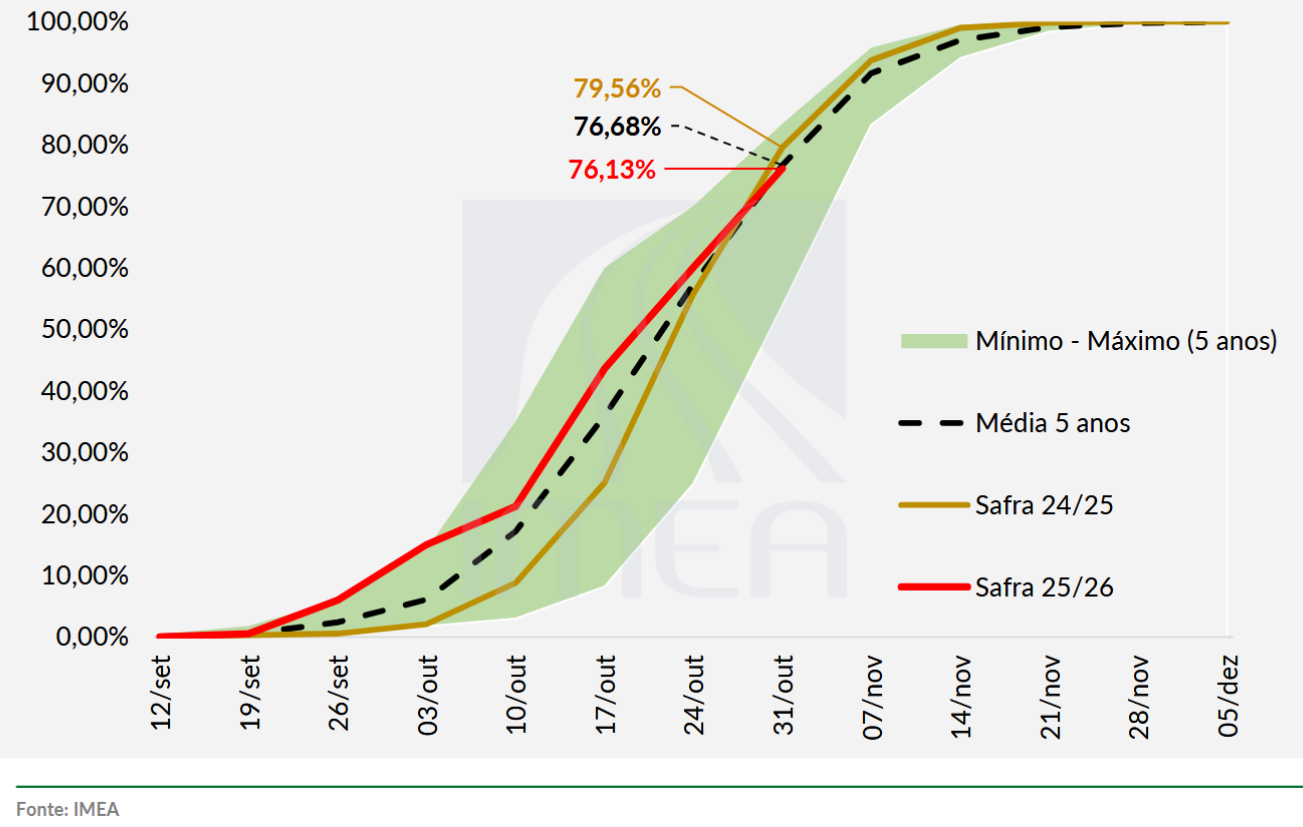Nov 06, 2025
2025/26 Brazil Soybeans 47% Planted
Author: Michael Cordonnier/Soybean & Corn Advisor, Inc.
The 2025/26 Brazil soybean estimate was left unchanged this week at 177.0 million tons, but I did change my bias from neutral to higher to just neutral. With dryness in east-central Brazil, especially in Goias, causing delays in soybean planting and widespread damage in Parana from weekend storms, I felt it was time to be a more cautious about the potential soybean yield. I did not lower the soybean estimate today, but a lower estimate is possible in the next week or two.
Brazil's 2024/25 soybeans were 47% planted as of late last week compared to 54% last year. This represents an advance of 11% for the week. Mato Grosso is 76% planted and Parana is 68% planted. Soybean planting has lost some of its momentum due to dryness in east-central Brazil and excessive wetness in parts of far southern Brazil. Some replanting will now be required in Parana due to severe storms over the weekend.
Rainfall over the weekend was focused on south-central and southeastern Brazil. Heavy rain, wind, and hail over the weekend impacted at least 40 municipalities or about half of the state of Parana causing widespread damage to crops and buildings. Some of the soybeans in Parana will need to be replanted, how much is yet to be determined.
Rainfall in Brazil has been slowly increasing, but there is still some dryness in east-central Brazil notably in eastern Mato Grosso, Goias, and points further east and north. In the dryer areas there are reports of delayed planting and some poor germination and emergence. Farmers in those areas are also worried about potential delays in planting their safrinha corn or cotton.
Metrologists in Brazil continue to forecast that rainfall in central Brazil will now start to improve this week. If the forecast verifies, it is not too late to plant soybeans in these eastern and northern areas, but the weather will need to cooperate for the remainder of the growing season to achieve normal yields.
A weak La Nina has developed in the Pacific Ocean which could impact the weather in South America. La Nina generally results in dryer than normal weather in southern Brazil, Argentina, Paraguay, and Uruguay with normal to above normal precipitation in central and northern Brazil. Such an impact, if it occurs, would most likely be felt during December and January.
Mato Grosso - Farmers in the state had planted 76.1% of their soybeans as of late last week compared to 79.5% last year and 76.6% average. This represents an advance of 16% for the week. The fastest planting pace is in the mid-north region where 96% of the soybeans have been planted. The slowest planting pace is in the southeastern region where 53% of the soybeans have been planted.
Below is the soybean planting pace in Mato Grosso for October 31, 2025 from the Mato Grosso Institute of Agricultural Economics (Imea).
Parana - Soybeans in the state were 68% planted as of earlier last week. Soybeans are 28% germinating, 71% in vegetative development, 1% flowering, and rated 4% average and 96% good. Heavy storms over the weekend caused widespread damage in 40 municipalities across the state. Some of the soybeans will need to be replanted due to hail and localized flooding - how much is yet to be determined.

Goias - Soybean planting in Goias continues to lag the average due to irregular rainfall during October. The Institute for Strengthening Agriculture in Goias (Ifag) estimates the soybean planting at 25-30% compared to the average of 45-50%, which is the slowest since 2017/18. With the delay in planting, there is a risk of pushing the safrinha corn planting to the second half of February, which increases the risk of water deficits before the corn matures. Ifag recommends farmers plant medium to early maturing varieties to preserve the safrinha corn planting window.